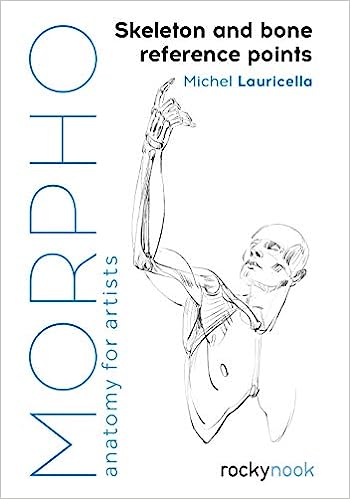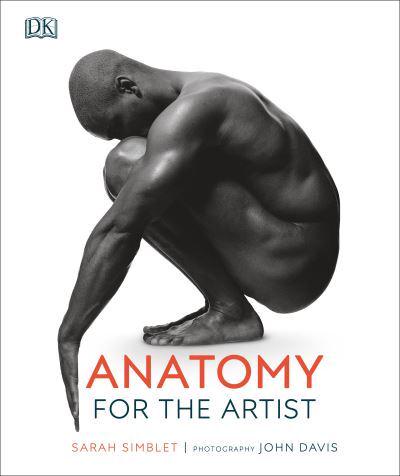
Sculpting for Film: Behind the Scenes of Ghost in the Shell
Working on Ghost in the Shell was an incredible opportunity — not only because it’s one of those iconic films you end up watching several times, but also because of the creative challenge and collaboration it involved. Like many projects at Weta Workshop, you rarely get to see the full picture until the very end. That’s part of the magic, and part of the chaos.
In the early days of a project like this, you get hints that something big is coming. You hear whispers in the studio — someone’s working on a sketch, a model is getting prototyped, or a new render pops up on a screen. But unless you’re a supervisor involved in the core planning meetings, the details remain scattered. It’s a bit like that game where people draw on each other’s backs and try to pass the drawing along — by the time it reaches the last person, the original image is nearly unrecognizable. That’s not exactly how things work at Weta, of course, but the analogy captures how fragmented the flow of information can feel. With so many departments and overlapping workflows, it’s easy to lose track.
Despite that, the outcome is often stunning — a patchwork of hundreds of skilled hands and eyes working toward a shared vision.
When I joined the Ghost in the Shell project, 3D printing technology was just starting to become more widely used at Weta. They were heavily investing in new printers, building up what would eventually become an entire farm of machines. For anyone who hasn’t seen a 3D printing farm in action, it’s wild — dozens of machines humming away, printing out precise components with microscopic levels of detail.
At the time, the mock-ups were usually printed using PLA or ABS filament — good enough to test out fit and function. But the real deal came from high-resolution powder printers that could capture detail down to 50 microns (that’s 0.05mm). For Ghost in the Shell, they used this tech to print the internal skeleton of the main character, played by Scarlett Johansson. Since her character is an android, the goal was to achieve a complex, futuristic, mechanical look — all digitally modeled and then printed, later finished and assembled by hand.
That’s where our sculpting team came in.
Our job was to sculpt the outer “skin” of the printed skeleton — to create the physical representation of Scarlett’s body based on digital scans. The initial scan, done in LA, was delivered to Weta’s digital department. From there, it was milled into clay using a CNC machine. What we found in the sculpting room was a rough version of the body in two large clay blocks — disconnected, misaligned, and missing the subtle organic shapes of a real figure.
Together with Masa, my sculpting partner, we set to work rebuilding and refining the form. That meant restoring anatomical accuracy, adjusting curves and volumes, and addressing proportion — especially where the milling was too rough or lacking resolution. We were asked to make multiple tweaks, including enlarging the breasts at the request of the art director. Later we heard that Scarlett herself was upset about that particular change. It’s a reminder of the strange intersection between craft and politics in this line of work.
In the background, our colleague Daniel Cockersell was working on refining her facial scan. Between the three of us, we had our hands full. Sculpting the body in plasticine, refining the face, and prepping everything for mold-making was a massive undertaking. But seeing the final product on screen — even knowing how different it was behind the scenes — was incredibly rewarding.
There’s a lot of behind-the-scenes work that goes unnoticed. The things you see in the movie often look metallic, heavy, or high-tech, but in real life they’re made of plastic, foam, or 3D-printed resin. Weapons don’t shoot, blood is syrup, and android exoskeletons are often painted PLA. The illusion is the magic of practical effects, and Weta is a master of that.
Still, it was during this project that I began to feel a shift — both in the industry and within myself. The role of a traditional sculptor was changing. As technology advanced, our tasks became more about cleanup and final touches than original creation. The real sculpting was happening in the computer. Artists who once spent their days elbow-deep in clay were now sitting in front of screens, working in digital environments that were sterile, clean, and efficient.
It’s not worse — just different. But for those of us who came up through hands-on methods, it feels like something essential is being lost.
I realized then that if I wanted to stay creative and fulfilled, I needed to carve out a path for myself. That decision led to the creation of my workshops, my personal projects, and everything I’m doing now. Sculpting for film taught me a lot — but it also showed me that I needed to keep evolving to stay true to the kind of work that feeds me.
Looking back, Ghost in the Shell was a highlight — not just because of the scale or the visibility of the project, but because of what it taught me about collaboration, adaptation, and the balance between tradition and innovation.
👉If you’re interested in the creative process behind movie sculpting, or you want to receive sculpting tips, watch tutorials or keep an eye on our online or In person workshops, Subscribe to the newsletter and I’ll keep you in the loop.
Sculpture studio © 2025. Javier Murcia.
Developed by Tulpnic.
Trustindex verifies that the original source of the review is Google. Trustindex verifies that the original source of the review is Google. Trustindex verifies that the original source of the review is Google. Trustindex verifies that the original source of the review is Google. Trustindex verifies that the original source of the review is Google. Trustindex verifies that the original source of the review is Google. Trustindex verifies that the original source of the review is Google.
Subscribe to receive updates on new articles, sculpting tips, and upcoming events — including online and in-person workshops.
In-person workshops are scheduled in different places at different times of the year. Most workshops run twice a year in different locations in New Zealand, Auckland being the most demanded of the locations. Australia and Europe are other locations planned to run workshops.
We are setting up a different challenge with a live model changing pose each time. Plenty of material, tutorials and online courses can help you on this journey and keep you connected with the community. To ensure you get this information, sign up for the newsletter.
If you are missing one day out of 2 or 3, we recommend you to wait until there is another chance as you might be missing quite a bit of information and time to do your work. If this is a 5 days workshop it might be ok.
Not really. Simplified figure is the only workshop we have designed to teach the basics of building the human figure so you have enough knowledge to make the most of a model. So, if you are thinking of joining the five days figure workshop with model, this might be good for you, although it is not mandatory.
Not really. The more experience you have the better. Javier Is an experienced sculptor and can adapt to your level whether you are just beginning or you are experienced, whether you are just looking at learning more anatomy or pursuing a more artistic challenge.
The workshops are designed for:
If you want to learn about the human figure, I would suggest you join the Online courses. Why? There is a lot more information Javier can share with you. You can find your time to invest in your learning process. Head studies online is about six weeks course, and the figure online course is about ten weeks. The more hours you put in, the more you will learn; that´s a rule. And finally, it is more personalized as the progress of your work will be reviewed every week by Javier personally.
If you are interested in doing a workshop but you don´t know which one, get in touch and let us know what is that you are looking for and we will help you. Either if you are looking for some good training, knowledge or just living the experience as a hobby, we can help you.

This book is essential for learning more about the human figure as it is very complete. Includes proportions based on eight heads ( be aware that we are using 7.5 heads), bone structure explanation, balance and range of movement of the joins. The anatomy applied to the figure is not necessarily as accurate as in the Paul Richer book. This book also includes pictures of models for an applied explanation.

This book is excellent for learning anatomy from a medical perspective applied to art. Here we also find his 7.5 cannon explained. The illustrations are accurate, giving the precise location of muscles, layers and mapping of the human body. This book is used in official academies like the Florence academy.

In this book, Michel Lauricella presents both his artistic and systematic methods for drawing the human body–with drawing techniques from the écorché (showing the musculature underneath the skin) to sketches of models in action. In more than 1,000 illustrations, the human body is shown from a new perspective–from bone structure to musculature, from anatomical detail to the body in motion.

This small, portable book presents a unique perspective on the human body for artists to study and implement in their drawing work. In this book, artist and teacher Michel Lauricella simplifies the human body into basic shapes and forms, offering profound insight for artists of all kinds, sparking the imagination and improving one’s observational abilities. Rather than going the traditional route of memorizing a repertoire of poses, Lauricella instead stresses learning this small collection of forms, which can then be combined and shaped into the more complex and varied forms and postures we see in the living body.

This book provides a simplified and practical vision of the human skeleton to help all artists in their drawing studies. Here you will find the most common and useful approaches to the body’s underlying skeleton and bone structure, which will fuel your imagination and enrich your observational skills as you draw the living form. In this small, portable guide, artist and teacher Michel Lauricella focuses on the essentials you need to know.

This book is excellent for the quality of the drawings; very expressive, fresh and accurate. This book is recommended as a reference for the quality of work we can achieve in the art standards mostly applied to drawing. It is also a good source of images of bodies and living anatomy.